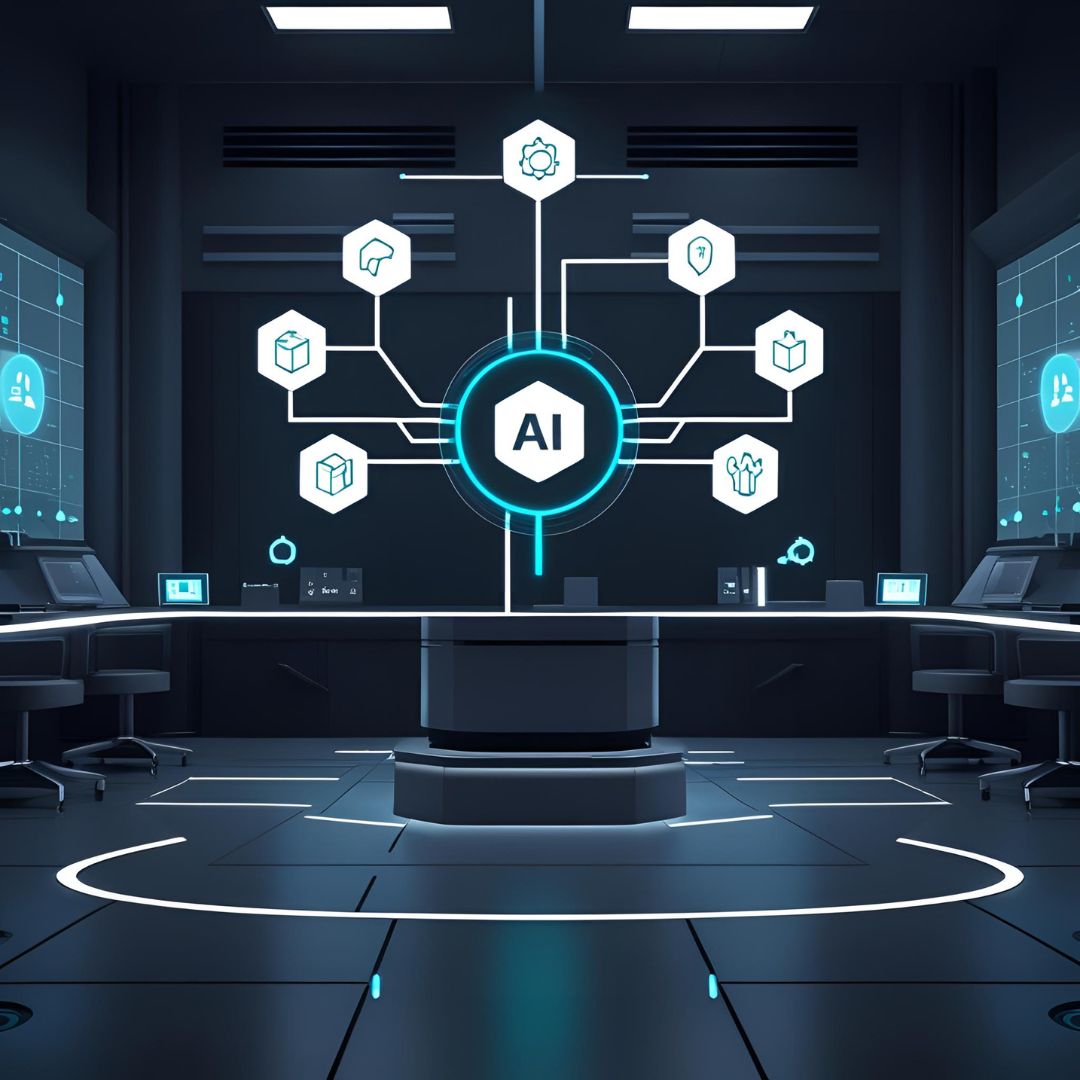The AI Agent Playbook: How Autonomous Workflows Are Rewiring Products in 2025
AI agents are moving from novelty to necessity. This guide explains how modern agents plan tasks, call tools, retrieve knowledge, and stay safe—plus a practical blueprint to build one your users will trust.
TrendFlash

Understanding the AI Agent Revolution
For decades, software served a singular purpose: respond to user input. A calculator computes. A search engine finds. A chatbot answers questions. In 2025, we're witnessing a fundamental shift in how intelligent systems operate. AI agents don't just respond—they reason, plan, and execute complex multi-step workflows with minimal human supervision.
This transformation represents the most significant breakthrough in AI news and trends since the rise of large language models. Understanding how modern AI agents work and how to build your first agent is now essential for businesses seeking competitive advantage.
What Makes an AI Agent Different from a Chatbot?
The Fundamental Distinction
Traditional chatbots operate reactively. You ask a question; they retrieve and return an answer. The interaction ends. AI agents, by contrast, operate autonomously and proactively. They receive high-level goals, break them into executable steps, call external tools and systems, and work toward completion without constant user direction.
Consider this practical example:
- Chatbot Interaction: User asks "What's the status of my order?" Chatbot queries database and returns order status. Conversation ends.
- AI Agent Interaction: User states "I haven't received my order yet." Agent investigates shipping status, identifies delay, checks warehouse inventory for alternatives, calculates refund scenarios, communicates with logistics partners, and presents the user with resolved options—all without additional user input.
This distinction matters enormously for organizations building customer support systems, internal operations tools, and enterprise automation. The difference between chatbots and agents isn't just technical—it's economic, as agentic AI reshapes workforce dynamics.
Core Architecture: How Modern AI Agents Function
The Agent Pipeline: Five Essential Components
Production-grade AI agents share a common architectural pattern that enables their autonomy and effectiveness:
1. Goal Interpretation & Planning
When users provide directives to an AI agent, the first step involves interpreting ambiguous natural language and translating it into a concrete action plan. Modern agents use what's called chain-of-thought reasoning—explicitly working through multi-step solutions before execution.
Example: User says "Schedule a meeting with the sales team about Q4 projections." The agent must:
- Identify relevant stakeholders ("sales team")
- Determine meeting parameters (duration, format, urgency)
- Find suitable time slots across calendar conflicts
- Create and distribute the meeting invite
- Set preparation reminders
This planning layer prevents agents from taking hasty or incorrect actions by thinking through consequences before execution.
2. Tool Use & API Integration
Agents cannot accomplish complex goals through conversation alone. They must interact with external systems: databases, APIs, file systems, communication platforms. The AI Agent Playbook emphasizes that modern agents should seamlessly call tools with proper input validation and error handling.
This requires strict typing: agents must know exactly what inputs each tool accepts and what outputs it provides. This specification prevents misuse and ensures reliability.
3. Retrieval-Augmented Generation (RAG)
LLMs have knowledge cutoff dates and can "hallucinate" information. Agents mitigate this through Retrieval-Augmented Generation (RAG), a technique where agents query knowledge bases before responding. Rather than relying on training data, agents pull current, verified information from curated sources.
This proves especially critical in:
- Finance: Agents need real-time market data, not training data from months ago
- Healthcare: Agents must reference current clinical guidelines and patient histories
- Customer Support: Agents need access to current policies, product documentation, and customer records
- Legal: Agents must reference current regulations and precedents
RAG transforms agents from generic conversation partners into domain-specific experts with access to institutional knowledge.
4. Memory & Context Management
Single-turn conversations don't require memory. Multi-step, complex workflows do. Modern agents maintain sophisticated memory systems that track:
- Conversation History: What was already discussed or attempted
- State Variables: Current progress toward goals
- User Preferences: Learned patterns about user needs and preferences
- Session Context: Temporal information about when decisions were made
This memory layer enables agents to handle nuanced, multi-session workflows that would be impossible without continuity.
5. Safety Guardrails & Human Oversight
Autonomous systems carry inherent risks. Unconstrained agents could delete critical data, expose sensitive information, or make unauthorized commitments. Production agents include multiple safety layers:
- Action Validation: Flagging potentially harmful actions for human review before execution
- Rate Limiting: Preventing resource exhaustion from repetitive actions
- Boundary Enforcement: Restricting agents to specific domains and action types
- Audit Trails: Complete logging of all agent decisions and actions
- Escalation Protocols: Clear procedures for human intervention when uncertainty exceeds thresholds
These safeguards are essential for enterprise deployment, particularly in regulated industries like finance, healthcare, and governance.
Real-World Enterprise AI Agent Use Cases in 2025
DevOps & Infrastructure Management
Modern cloud infrastructure generates alerts constantly. Agentic AI in practical enterprise scenarios shows DevOps teams using autonomous agents to:
- Monitor system health in real-time
- Detect anomalies before they cause outages
- Automatically remediate common issues (restart services, scale infrastructure, apply patches)
- Route complex problems to appropriate human specialists
- Generate post-incident reports and prevention recommendations
This reduces mean-time-to-resolution (MTTR) from hours to minutes and frees DevOps engineers for strategic work.
Customer Service & Support
AI-powered service agents are transforming call center operations by handling end-to-end customer interactions. These agents:
- Understand customer context from interaction history and account data
- Resolve straightforward issues immediately (password resets, billing inquiries, product questions)
- Escalate complex problems with full context to human specialists
- Follow up on resolutions to ensure satisfaction
- Proactively alert customers to potential issues before they cause problems
Enterprise deployments report 40-60% reduction in human agent load while improving customer satisfaction through 24/7 availability and instant response times.
Financial Operations & Trading
Finance is an ideal domain for autonomous agents because decisions often follow clear rules and data is highly structured. Agents are transforming risk assessment, trading, and compliance operations by:
- Monitoring markets 24/7 and executing trades within predefined parameters
- Continuously assessing portfolio risk and rebalancing as needed
- Processing regulatory filings and compliance requirements automatically
- Detecting fraud patterns across millions of transactions
- Generating real-time reporting for stakeholders
The competitive advantage from millisecond-faster decision-making drives significant adoption in this sector.
Sales Operations & Lead Management
Platforms like Salesforce Agentforce demonstrate how agents streamline sales workflows:
- Automatically qualify leads based on fit criteria
- Route leads to appropriate sales representatives
- Send personalized outreach messages
- Schedule meetings and handle logistics
- Track engagement and surface at-risk opportunities
- Generate next-best-action recommendations
This automation significantly increases sales velocity while improving conversion rates.
Conclusion: Agents as Strategic Assets
AI agents represent the next frontier in enterprise automation. The future of work isn't about replacing humans with machines. It's about amplifying human capability through intelligent automated partners. Your organization's success in 2025 and beyond depends on understanding and embracing this shift.
Ready to transform your operations? Explore more on AI tools and applications, AI for business and startups, and explore all AI trends and insights on TrendFlash.
Tags
Share this post
Categories
Recent Posts
Google DeepMind Partnered With US National Labs: What AI Solves Next
Molmo 2: How a Smaller AI Model Beat Bigger Ones (What This Changes in 2026)
GPT-5.2 Reached 71% Human Expert Level: What It Means for Your Career in 2026
74% Used AI for Emotional Support This Holiday (Gen Z Trend Data)
Related Posts
Continue reading more about AI and machine learning

Google DeepMind Partnered With US National Labs: What AI Solves Next
In a historic move, Google DeepMind has partnered with all 17 US Department of Energy national labs. From curing diseases with AlphaGenome to predicting extreme weather with WeatherNext, discover how this "Genesis Mission" will reshape science in 2026.

GPT-5.2 Reached 71% Human Expert Level: What It Means for Your Career in 2026
OpenAI just released GPT-5.2, achieving a historic milestone: it now performs at or above human expert levels on 71% of professional knowledge work tasks. But don't panic about your job yet. Here's what this actually means for your career in 2026, and more importantly, how to prepare.

74% Used AI for Emotional Support This Holiday (Gen Z Trend Data)
New survey: 74% of people globally relied on AI during the 2025 holidays—not just for shopping, but for emotional support. Here's what Gen Z is actually doing and why experts are concerned.